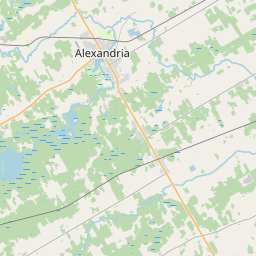Inscription
Le bateau Durham
English:Of American origin, the Durham boat was introduced into Canada in around 1810. Since it was a flat-bottomed, shallow-draught vessel, it could be used in rapids, and shoal without running aground. It was equipped with an oar that served as a rudder. Even though it did not have a keel or a centreboard, it could still be handled with ease on the turbulent waterways of North America. The Durham boat was propelled downstream by oars and upstream by poles. It could also be navigated with a sail when the wind was favorable. The sail was usually square and it was used in the presence of the down wind.
The trip up the St. Lawrence River was long and exhausting in a Durham boat. It usually took 10 to 12 days to get from Montréal to Kingston, while the return trip could be done in 3 to 4 days. Today, freighters can travel the same distance in approximately 18 to 20 hours by passing through the St. Lawrence Seaway.
A Boat for Transporting Merchandise
Durham boats could measure up to 27.4 m long by 3.65 m wide. Long and narrow, these vessels were designed primarily to transport merchandise and were therefore not very comfortable for their crews.
Crew size varied depending on the difficulty of the journey. Only 4 or 5 men were needed to travel down the St. Lawrence, while the return trip upstream required approximately 10 men. The crew slept on the deck under tarpaulins, whenever they could find enough room. The skipper alone was entitled to a cabin located in the stern of the boat.
The carrying capacity of the Durham boat was 350 barrels of flour or 35 metric tons.
In 1835, around 300 Durham boats were used to transport merchandise on the St. Lawrence River.
The mast of the Durham boat measured 10 to 12 m high. Since it had a special joint located a few feet above the deck, it could be lowered rapidly without displacing the cargo when the vessel passed under bridges, through canals.
French:
D'origine américaine, le bateau Durham fit son apparition au Canada vers 1810. Bateau à fond plat et de faible tirant d'eau, il pouvait franchir rapides et hauts-fonds san s'échouer. Doté d'un aviron tenant lieu de gouvernail, cette embarcation n'avait ni quille ni dérive, ce qui ne l'empêchait pas d'évoluer avec aisance sur les cours d'eau tumultueux de l'Amérique du Nord. Le bateau Durham était propulsé à l'aviron pour descendre les cours d'eau et à la perche pour les remonter. Il pouvait aussi naviguer à la voile par vent favorable. Celle-ci était généralement carrée et ne servait que par vent arrière.
La remontée du fleuve Saint-Laurent en bateau Durham était longue et exténuante. Partant de Montréal, il fallait en général de dix à douze jours pour atteindre Kingston, alors que le retour s'effectuait en trois ou quatre jours. Aujourd'hui, un cargo empruntant la voie maritime du Saint-Laurent prend de 18 à 20 heures pour franchir la même distance.
Un bateau conçu pour le transport des marchandises
Les dimensions du bateau Durham pouvaient atteindre 27,4 m de long par 3,65 m de large. Étroite et effilée, cette embarcation, si pratique pour le transport des marchandises, s'avérait en revanche très inconfortable pour l'équipage. Celui-ci variait en nombre selon la difficulté du voyage. Pour descendre le fleuve Saint-Laurent, quatre à cinq hommes suffisaient, tandis qu'a la remontée une dizaine d'hommes étaient nécessaires. Ceux-ci dormaient sur la pont, sous des toiles, là ou ils pouvaient trouver de la place. Le capitaine était le seul à disposer d'une petite cabine à l'arrière du bateau.
La capacité de charge maximum d'un bateau Durham était de 350 barils de farine ou de 35 tonnes.
En 1835, environ 800 bateau Durham étaient utilisés pour le transport des marchandises sur le fleuve Saint-Laurent.
Le mât du bateau Durham avait une hauteur de dix à douze mètres. Fixé au-dessus du pont, on pouvait le rabattre rapidement, san déplacer la cargaison, lorsqu'on passait sous les ponts, dans les canaux.
Details
| HM Number | HM1KSE |
|---|---|
| Tags | |
| Placed By | Parks Canada / Parcs Canada |
| Marker Condition | No reports yet |
| Date Added | Thursday, May 28th, 2015 at 2:02pm PDT -07:00 |
Pictures
Locationbig map






| UTM (WGS84 Datum) | 18T E 564641 N 5015272 |
|---|---|
| Decimal Degrees | 45.28798333, -74.17570000 |
| Degrees and Decimal Minutes | N 45° 17.279', W 74° 10.542' |
| Degrees, Minutes and Seconds | 45° 17' 16.74" N, 74° 10' 32.52" W |
| Driving Directions | Google Maps |
| Which side of the road? | Marker is on the right when traveling North |
| Closest Postal Address | At or near 18 Rue Wilson, Coteau-du-Lac Québec J0P 1B0, CA |
| Alternative Maps | Google Maps, MapQuest, Bing Maps, Yahoo Maps, MSR Maps, OpenCycleMap, MyTopo Maps, OpenStreetMap |
Is this marker missing? Are the coordinates wrong? Do you have additional information that you would like to share with us? If so, check in.
Nearby Markersshow on map
A dry canal
A very busy canal
Destination: Great Lakes / Destination: Les Grands Lacs
Adapting the canal to new needs
A canal that must be preserved
What is a lock canal?
North blockhouse / Le blockhaus nord
A canal excavated in the rock
Worth Defending! / Mission: Parry Any Land-based Movements
A supply centre / Un poste de ravitaillement
Maintenance Issues
- Is this marker part of a series?
- What historical period does the marker represent?
- What historical place does the marker represent?
- What type of marker is it?
- What class is the marker?
- What style is the marker?
- Does the marker have a number?
- What year was the marker erected?
- This marker needs at least one picture.
- Can this marker be seen from the road?
- Is the marker in the median?

Comments 0 comments